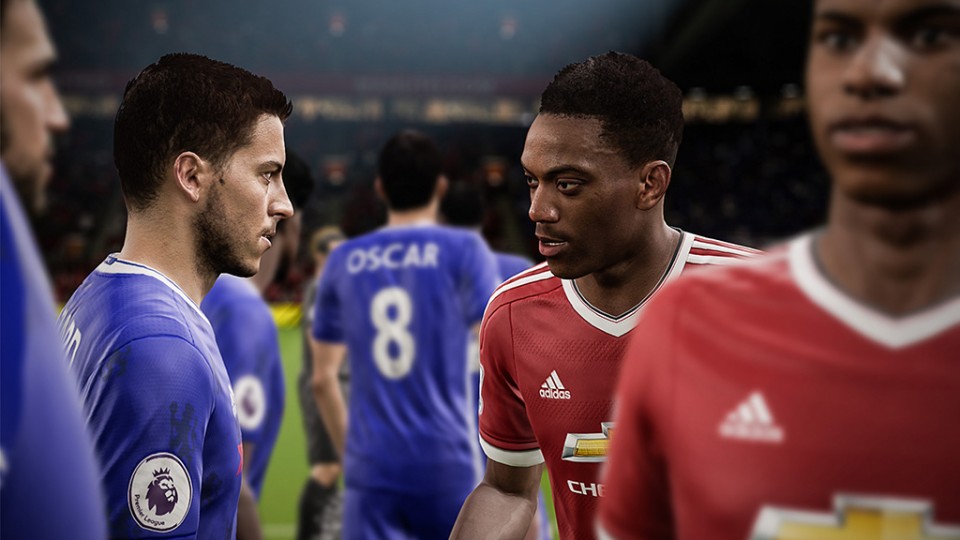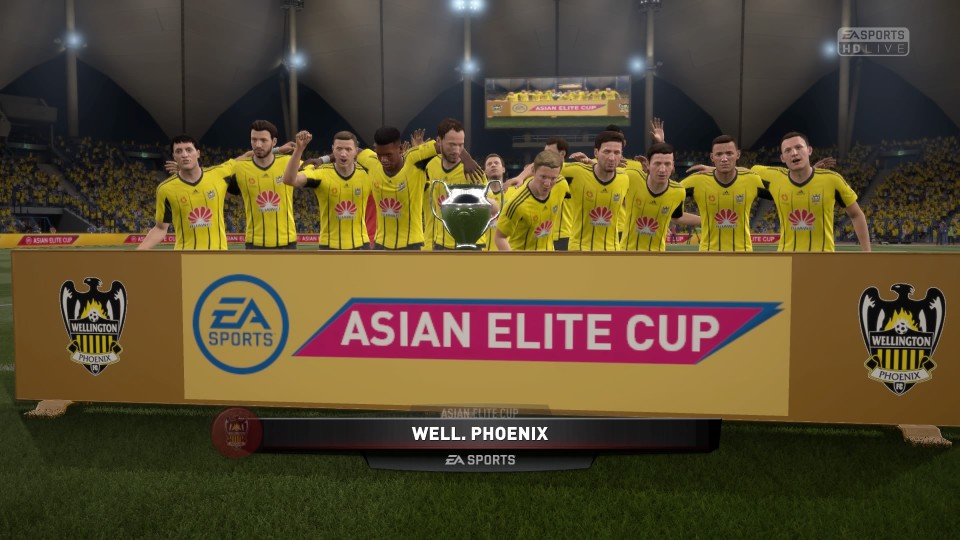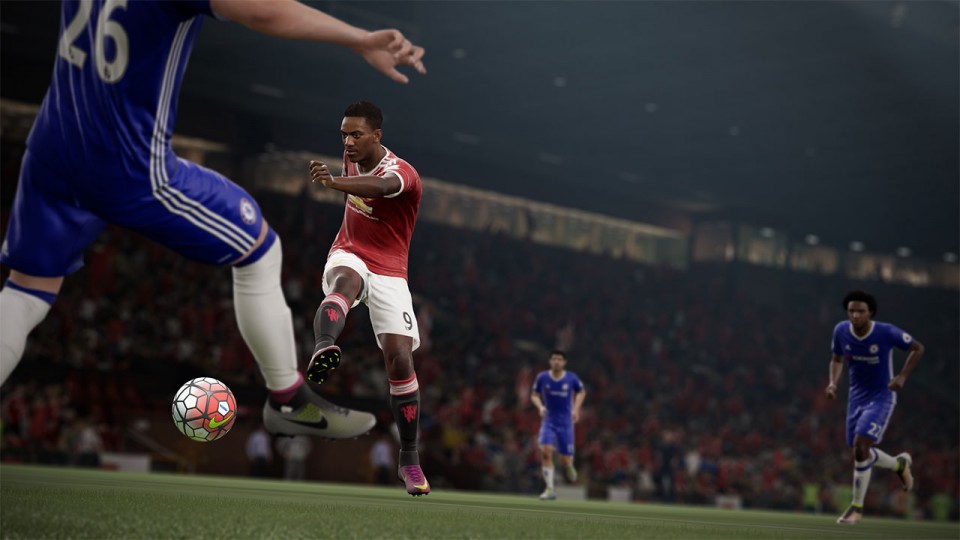Usually I struggle to come up with new things to talk about with each annual update of FIFA – but not so with FIFA 17. There are a number of changes to the franchise this year, starting with the obvious graphical changes now that the game has ditched the Ignite engine. Instead EA have opted toward their in-house Frostbite engine that has powered Battlefield titles in the past. While I was disappointed there were no epic explosions and the levolution of stadiums, the new graphics and physics engine add a whole new depth of realism to FIFA 17.
The timing of FIFA 17’s release couldn’t be better with the Wellington Phoenix about to kick-off their season in the upcoming A-League too. It’s a great way to preview the squad line-ups and mentally prepare for what could be our best shot at a title in years. Just like previous editions, FIFA 17 includes the complete A-League tournament, but it feels more inclusive this time around.
For example when you start a tournament, you get to play through some pre-season matches before it officially starts. Unlike previous years, which had you playing unusual teams from Europe or Africa, the pre-season tournament are now Asian Cup fixtures, similar to the kind of matches the A-League already competes in.
It’s this level of detail and forethought which is rife throughout FIFA 17, and overall the game feels more cohesive and personalised. It can be seen in the improved Be a Pro mode, where you’re able to create (or select) a player and take them into your favourite club to rise through the ranks to MVP status. In previous years, the Be a Pro mode was hampered by overly harsh and binary-like reward or penalty points as you played a game.

Now in FIFA 17, there is a new meter on the screen which shows your player rating out of 10, but then offers far more constructive and friendly messages so you know what to improve on. For example it will properly acknowledge when you take a decent shot, or make a good run – or let you know when you make a poorly timed challenge or waste an opportunity before deducting from your score.
FIFA 17 also introduces a whole new mode never seen before, which is very similar in concept to what 2K did with their NBA series, but executed better. Called The Journey, it puts you into the modestly priced boots of a young Alex Hunter – who is looking to achieve his dream of becoming the next David Beckham.
The Journey mode was surprisingly captivating, and provides a new gameplay experience to the FIFA series. You are introduced to Alex when he’s a young footballer, just looking to impress his distant dad at a junior match. Before long you’ll be rising through the academy, competing for a professional contract and if you’re good enough, running onto Old Trafford in front of tens of thousands of adoring fans.
Friendships will be formed, and relationships put to the test as you carve out a future for Alex. In between training and proper matches, you’ll also be giving him a personality, with numerous opportunities to interact with people in either a fiery or composed manner which will affect your standings with friends, family and your manager. Having an ego might boost your followers on social media, but being out-spoken could also reduce your favour with the coach, and you might find yourself on the bench next game.

Outside of the impressive The Journey mode, there are other upgrades and tweaks worth mentioning; free-kicks and corner kicks now are much more precise, with a new indicator to show where the ball will land, allowing you to focus more on delivery – whether it’s lobbed high, or driven with power into the box.
Penalties have a whole new engine too, and my first impressions are it gives you a lot more control over the placement of the ball. Gone is the left-to-right scrolling meter where you have to tap the button in the green zone. Instead you are given an arrow to show the ball’s trajectory and how long you press the shoot button determines the strength and height. Players can also adjust their run up, and as an added bonus, goalkeepers can now taunt the penalty taker at the press of a button.
As you’d expect, the level of polish in the game’s visuals are still excellent. Menus and interfaces are slick and inline with the same layout as last year’s version, except now they have been given a lick of bright yellow paint. It also coincides with the poster boy of the game, Marco Reus, and his yellow clad strip of German club Borussia Dortmund. Combined with his well-positioned ink down his arm, I can’t help but think Reus was chosen more for aesthetic reasons, rather than the public poll that EA ran a while back.
The new Frostbite engine has made a number of improvements across the board, and player models are some of the best seen in the franchise. Famous faces are all instantly recognisable, although I feel for local player Kosta Barbarouses, who looks like he’s got a baked potato for a head. Understandably some of the lesser-known teams suffer from copy and paste models, and the Phoenix sadly fall into that category.

Oddly enough, what used to be a highlight in FIFA titles – the music – is a lot more low-key this time around. It’s not as diverse as before and lacks a lot of big names, making it more like an alternative indie soundtrack. One nice feature though is the ability to select which tracks play in your shuffled playlist, so if there’s a track that isn’t to your liking, you can simply toggle it off and never have to hear it again.
Finally in the presentation side of things, it’s the cinematic details that make FIFA so enjoyable. The replay footage which kicks in after a few seconds when you pause the game, or the tournament celebrations which seem to have been given a major facelift, complete with fireworks and one of the most over the top metallic texture engines I’ve ever seen (used purely for trophies).
However, when a franchise like FIFA has set the bar so high, you can’t help but notice the little things that stand-out. For example there are some uncharacteristically poor lighting effects, where players near the sideline will suddenly have their faces lit up as if they had a fluorescent light bulb suspended above their head. At first I thought maybe it’s meant to be the flash of cameras from the stand, but if so then they must be using radioactive bulbs.
The crowd models are diverse and from a distance, they do a fine job, but you still can’t help but notice the moments when patches are perfectly in sync; and while the character model animations have been improved greatly across the board, nearly every single coach sequence has your gaffer eating an invisible ice-cream. And why does FIFA insist on having goalies wearing the exact same colour as the opposing team? How hard would it be to ensure it’s a completely different colour just like they do in the real game? They’re minor details, but they stand out alongside all the other polished aspects.

It’s easy to look past these annoyances in the light of what the game delivers though. Fans of the series should look out for FIFA 17, even if they just picked up last year’s edition. The Journey mode alone is worth checking out and with the all new graphics and physics engine in the mix, it feels like a fresh new direction, or an evolution, of an enduring franchise.